Image of the Day: March 2011
Stare into the Sun
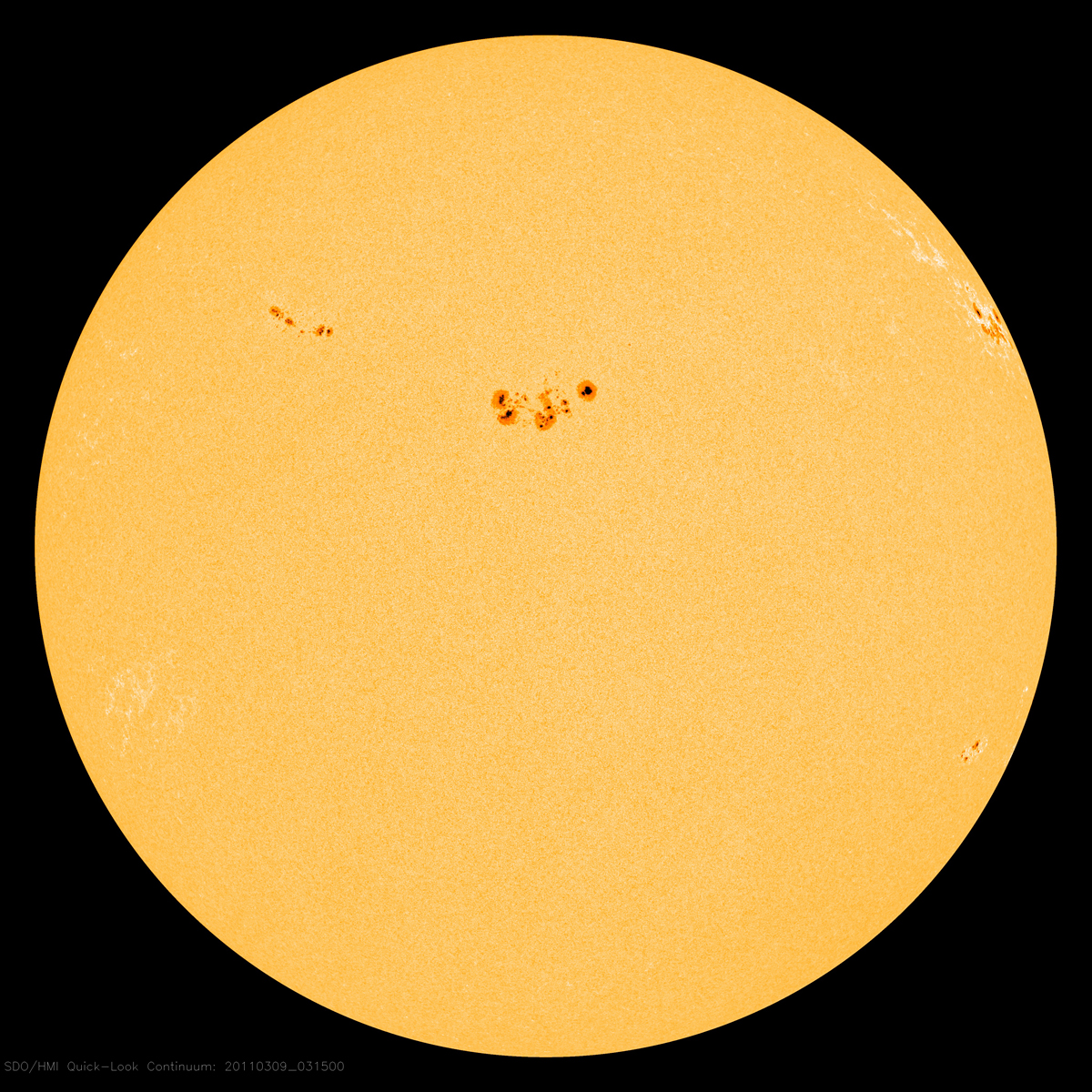
Wednesday, March 16, 2011: It was just a few weeks back that the sun was often free of spots. But on March 9, 2011, it had four separate sunspot groups, part of an increase in activity in recent weeks. Sunspots are cool, magnetically active regions on the sun that act like caps on a soda bottle. Sometimes the caps pop off, releasing a torrent of solar energy in the form of light and charged particles. Such a flare was released on March 9. The groups are numbered 1169 (left), 1166 (center), 1164 (upper right) and 1170 (lower right).
--Robert Roy Britt
Irish Lace
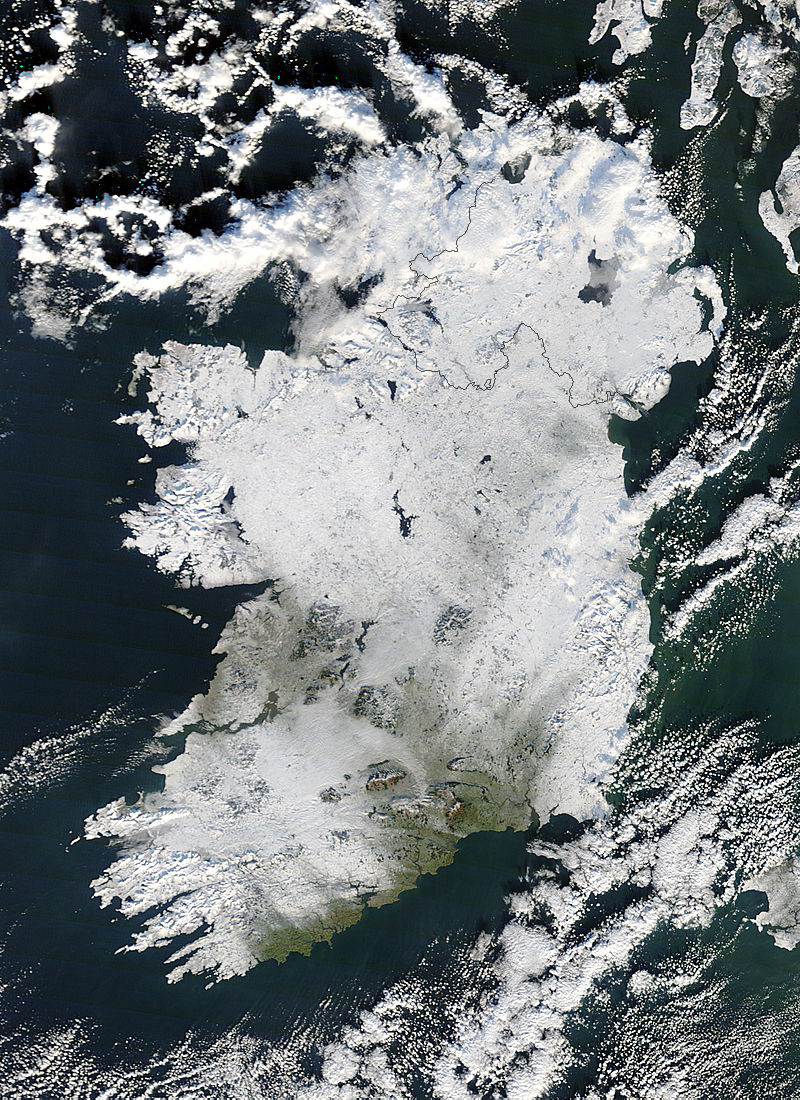
Thursday, March 17, 2011: Lacy clouds encircled Ireland a few months ago on December 22, 2010, while a heavy covering of snow lay upon the land. NASA's Terra satellite used its Moderate Resolution Imaging Spectroradiometer (MODIS) instrument to capture this true-color image of the snow. The overnight arrival of 6 in. (15 cm.) of snow at the Dublin airport forced its closure, and severe weather disrupted air, road and rail travel, closed schools and businesses and caused power outages.
--Tom Chao
Pack Your Trunk and Say Goodbye to the Circus
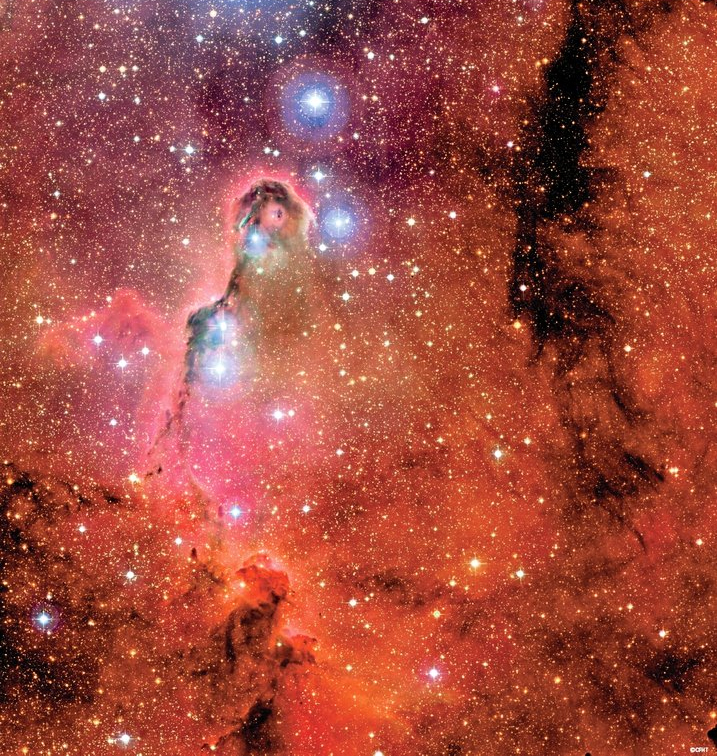
Friday, March 18, 2011: The Elephant's Trunk Nebula sits in star cluster IC 1396, in the constellation of Cepheus. A cloud of high-temperature gas warmed up by newly born stars forms the emission nebula. Hydrogen, the most common element in space, glows intensely in red light when heated by hot, young stars seen inside the "trunk."
--Tom Chao
Too Close for Comfort
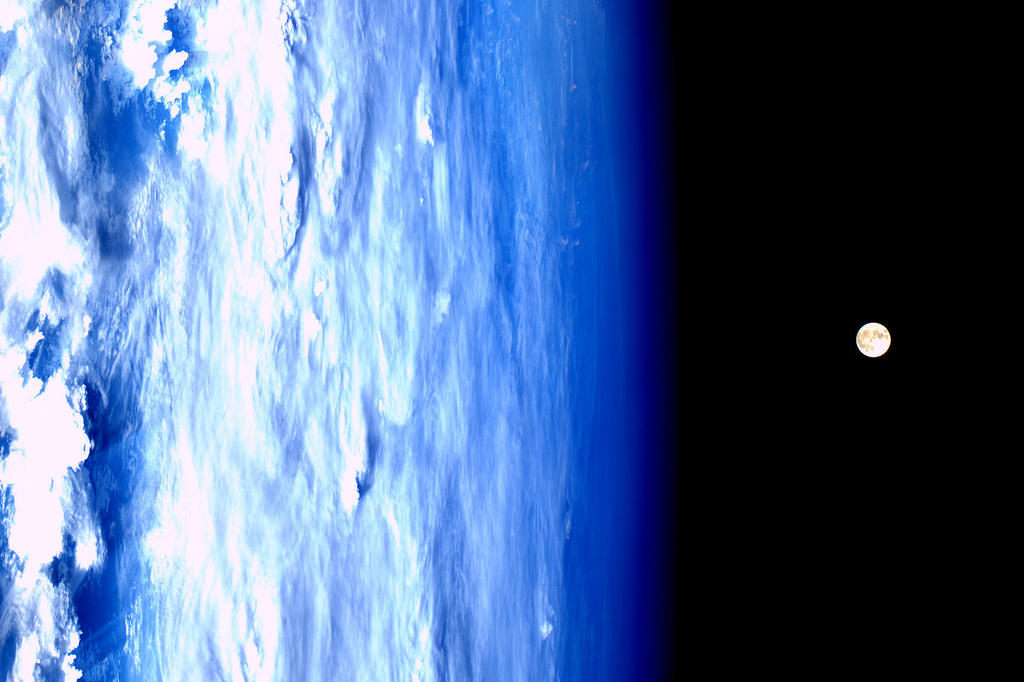
Monday, March 21, 2011: Astronaut Paolo Nespoli took this photo of the "supermoon" aboard the International Space Station on March 20, 2011.
--Tom Chao
Young, Gifted and Blue
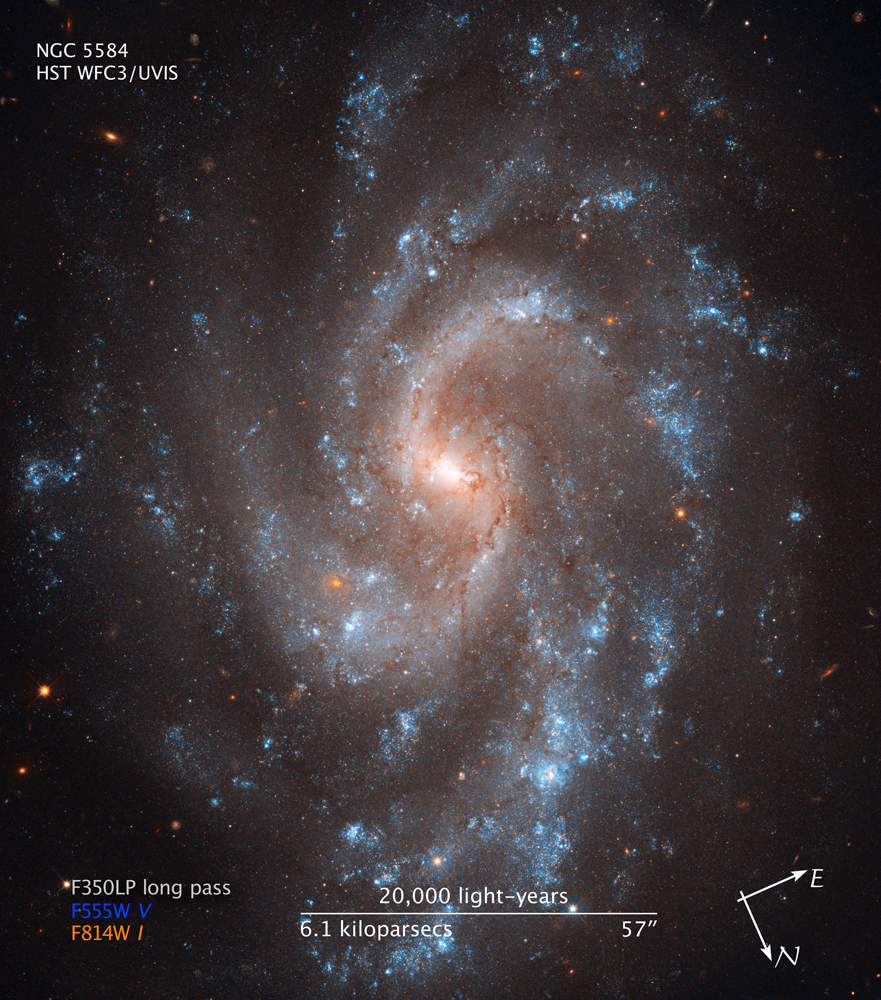
Tuesday, March 22, 2011: Blue young stars shine in the spiral arms of galaxy NGC 5584, as shown by this Hubble Space Telescope image. Thin, dark dust lanes flow from the yellowish core, filled with older stars. The reddish dots throughout the image are largely background galaxies. Several exposures taken in visible light between January and April 2010 with Hubble's Wide Field Camera 3 combine to make this image.
--Tom Chao
Falling Slowly

Wednesday, March 23, 2011: The Soyuz TMA-01M spacecraft floats down to Earth near the town of Arkalyk, Kazakhstan on Wednesday, March 16, 2011. The vessel carried Expedition 26 Commander Scott Kelly and Flight Engineers Oleg Skripochka and Alexander Kaleri. Russian cosmonauts Skripochka and Kaleri returned after almost six months onboard the International Space Station, where they served as members of the Expedition 25 and 26 crews.
--Tom Chao
How Many Holes It Takes
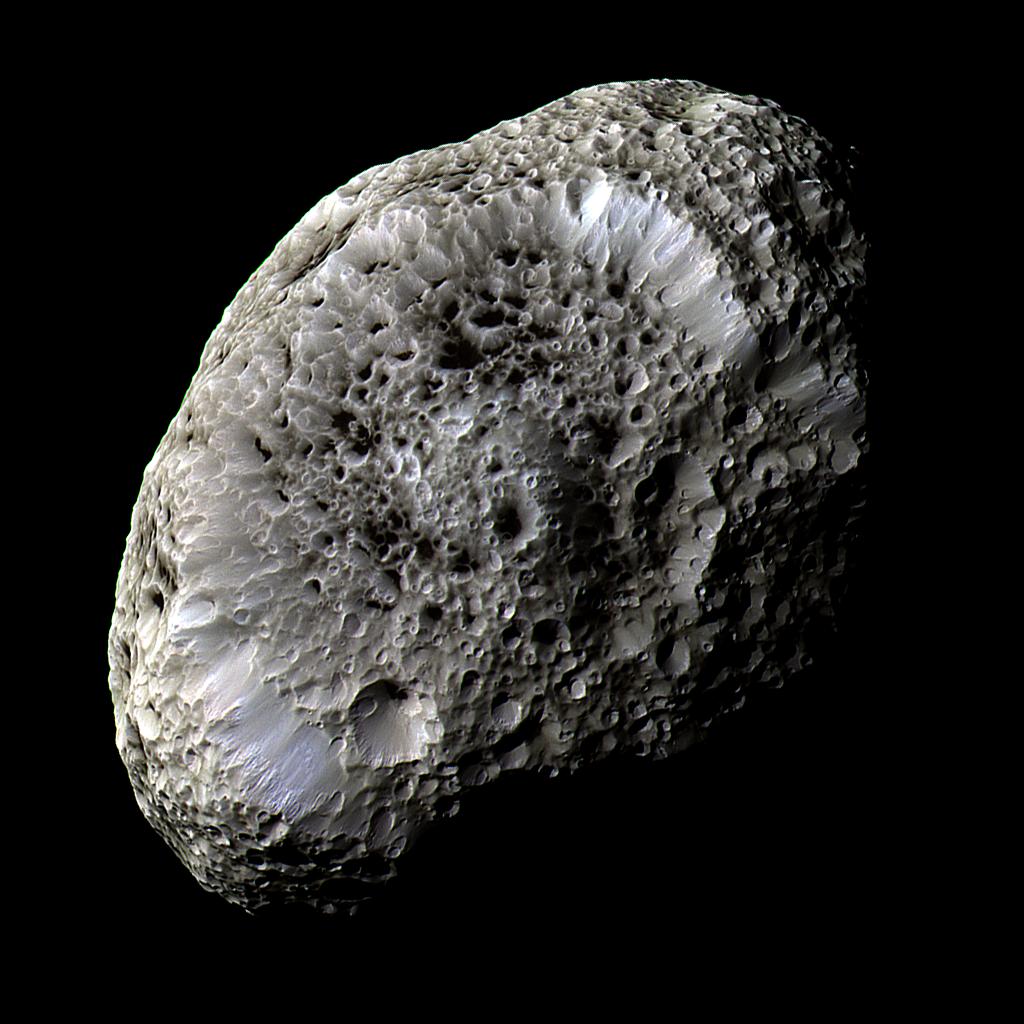
Thursday, March 24, 2011: Saturn's moon Hyperion possesses many craters, most of which contain an unknown dark material. This 2005 Cassini image shows the strangely-textured surface. Hyperion measures about 150 miles (250 km) across, rotates chaotically and might contain a vast system of caverns.
--Tom Chao
Get the Space.com Newsletter
Breaking space news, the latest updates on rocket launches, skywatching events and more!
Mountains Come Out of the Sky
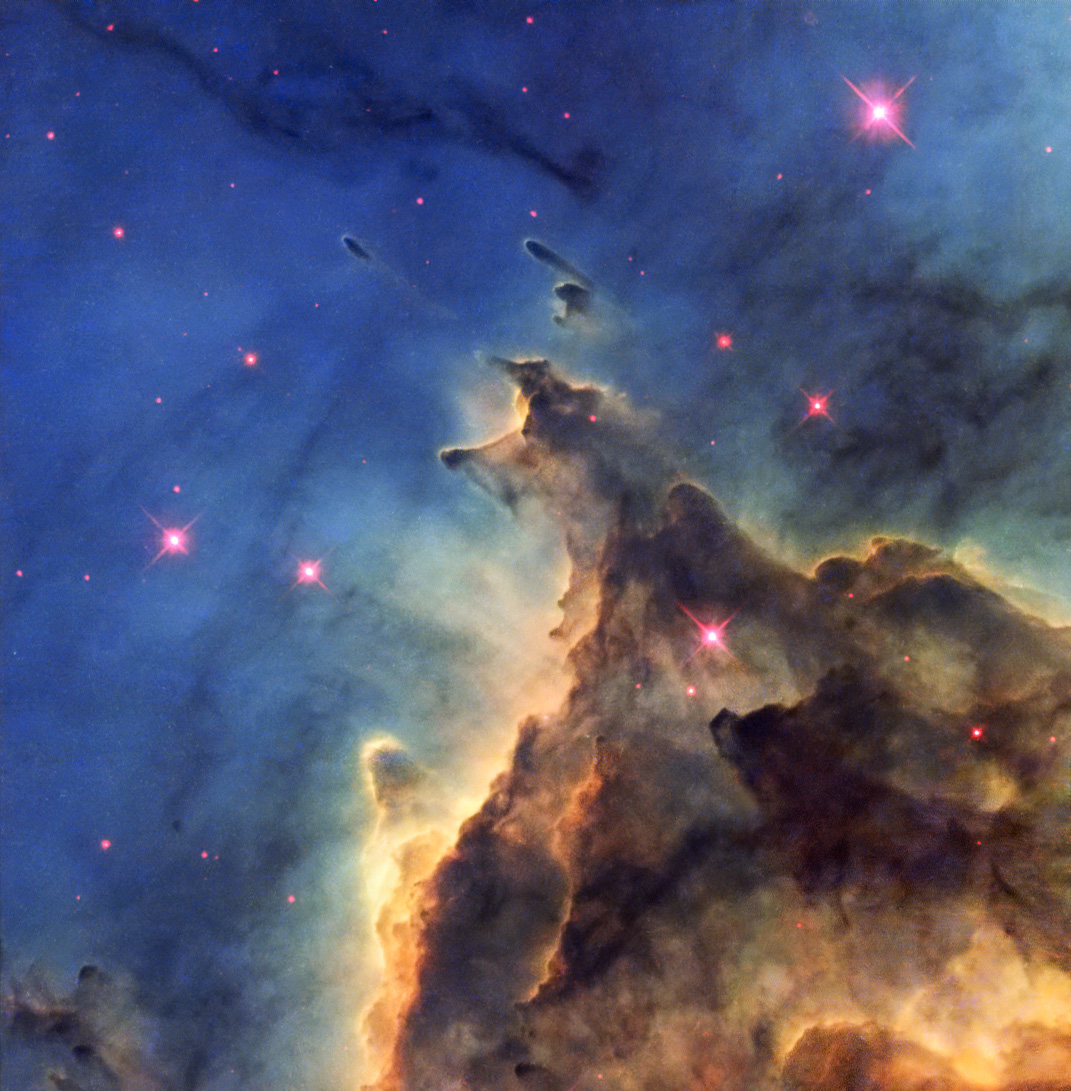
Friday, March 25, 2011: Dust in nebula NCG 2174 appears in mountain-like formations, though the structures have no more substance than air. Nearby bright, newly formed stars emanate light and winds that disperse the "mountains." NCG 2174 lies in the constellation Orion.
--Tom Chao
The Latest Fashion

Monday, March 28, 2011: The city of Milan, Italy appears as a cluster of lights in this photograph, with brilliant white lights indicating the historic city center where the Duomo di Milano (Milan Cathedral) stands. The Expedition 26 crew aboard the International Space Station took this picture on February 22, 2011.
--Tom Chao
The Madding Crowd
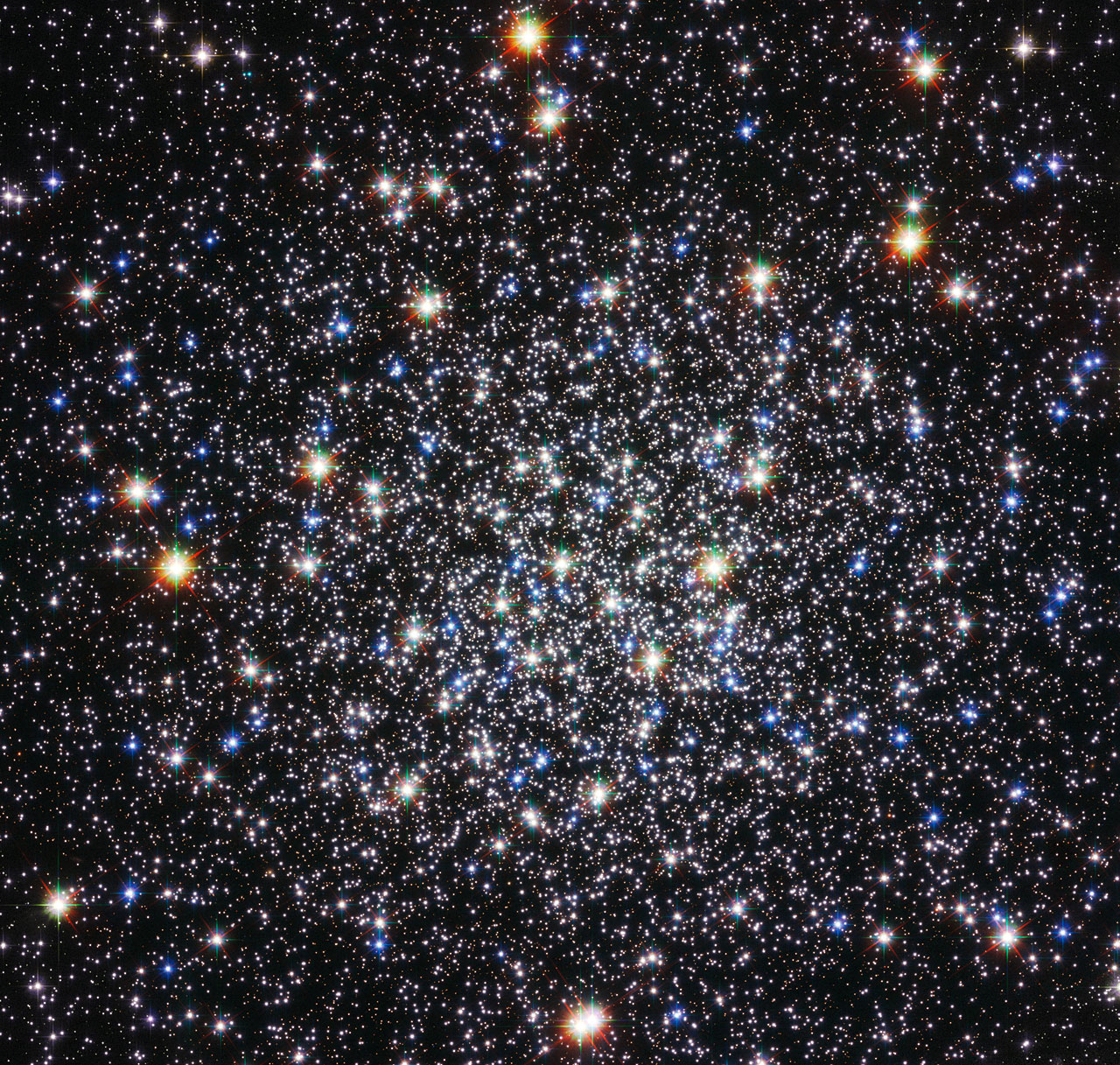
Tuesday, March 29, 2011: The cramped quarters in globular clusters like Messier 12, shown here, makes them home to binary star systems where two stars tightly orbit each other, and one sucks up matter from its companion, releasing X-rays.
--Tom Chao
Join our Space Forums to keep talking space on the latest missions, night sky and more! And if you have a news tip, correction or comment, let us know at: community@space.com.

Space.com is the premier source of space exploration, innovation and astronomy news, chronicling (and celebrating) humanity's ongoing expansion across the final frontier. Originally founded in 1999, Space.com is, and always has been, the passion of writers and editors who are space fans and also trained journalists. Our current news team consists of Editor-in-Chief Tariq Malik; Editor Hanneke Weitering, Senior Space Writer Mike Wall; Senior Writer Meghan Bartels; Senior Writer Chelsea Gohd, Senior Writer Tereza Pultarova and Staff Writer Alexander Cox, focusing on e-commerce. Senior Producer Steve Spaleta oversees our space videos, with Diana Whitcroft as our Social Media Editor.









